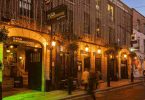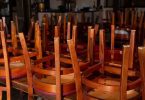No green frogs, please!
“It can’t be green and there mustn’t be a frog!” That’s what the owner of California’s Frog’s Leap estate, John Williams, said in 1978 when he hired label designer Charles Halst to produce something suitable for his new wine venture. Actually, Halst wasn’t a label designer at all at the time. He was still a student working part-time at a gas station and the sole professional design job to his name had been a wedding invitation, which was why Williams had been able to procure his services for $100 and a case of wine. But Halst bravely set to and produced a label which was not only green and had a frog but also put both Williams and himself on the path to fame.
Frog’s Leap is now one of the most highly regarded and best recognised Napa Valley estates, while Mr Halst, from this slightly unpromising beginning, wound up as head of one of California’s most successful design agencies, with packages from $30,000.
Jonah Beer is the ironically named general manager of Frog’s Leap and was in Dublin recently to show the wines at Berry Bros and Rudd (available through Berry’s to independent off-licences). The wines aren’t cheap, starting at around €23 retail, but they are good special treats, with the chardonnay and zinfandel being especially characterful and interesting. The current Chardonnay (2007) is from one of California’s best chardonny regions, Carneros. It’s noticeably accomplished, with lovely crispness balancing creamy citrus, and good length. There’s just the faintest hint of age and it should continue to evolve well over the next few years. The Zinfandel 2005 is definitely not one of the crowd. It contains almost 25% petite syrah which tones down the typically flashy bramble fruit, adding some soft berry fruit and structure along the way.
Petite syrah is a California speciality and produces some of its most interesting wines, even though, strictly speaking, it doesn’t even exist! It is a name that was applied many years ago to local field blends which, along with southern French varieties, contained large proportions of durif, a grape that was developed in Bordeaux during the 19th century. Occasionally, vineyards were planted solely with durif and the worth of this grape, abandoned in Bordeaux after the phylloxera epidemic, was increasingly recognised. Nowadays, many growers when replanting these old vineyards are raising the proportion of durif to 100% or not far off.
The resulting wines are usually sold with a varietal petite syrah label and, although some growers believe that wines with more than 25% durif should be labelled as such, the traditional approach doesn’t look like changing any time soon. In Frog’s Leap Zinfandel, the addition of the variety has added a subtle new dimension to the wine, producing something that is easier to drink, yet is more elegant and food friendly than many Zins.
A fine, fruity Merlot 2006 was in classic Napa style: well-structured but with an opulent feel. Both Napa Cabernet 2006 and Rutherford Napa Cabernet 2004 (€64) had loads of cassis fruit but, at half the money of the Rutherford, the Napa offered reasonable value with a lengthy kick of fruit at the end.








